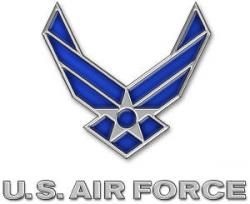Adaptive Fan Rig Would Change Bypass Ratios For Thrust Optimization
Testing of a unique, adaptive supersonic fighter engine fan rig based on a full-scale F135 development fan to advance the next generation of military fighter engine technology is underway at the U.S. Air Force Research Laboratory (AFRL). The purpose of the adaptive fan rig test is to mature technologies associated with adaptive bypass flow associated with a third stream of air, which will enable efficiency improvements in long-range persistence and high thrust combat maneuvers as well as in transonic and supersonic flight conditions.

Similar to changing gears in a car or on a bicycle, changing an aircraft engine's bypass ratio allows the engine to be optimized for high thrust takeoffs, while maintaining the efficiency of a commercial airline's high bypass engine in cruise conditions. Unlike commercial airline engines which are attached to the wing, engines used in modern fighter aircraft must use smaller diameter turbofans and be embedded within the aircraft. Consequently, there is a performance tradeoff between high thrust capabilities and optimum efficiency experienced in cruise conditions. Developing a next generation variable cycle adaptive engine is therefore essential to meeting the evolving needs of the warfighter.
Modern military turbofan engines have two airstreams – one that passes through the core of the engine, and another that bypasses the core. Development of a third stream of airflow will allow for improved fuel efficiency and cooler heat sinks which improve thermal management of the air system and reduced heat signature.
"Developing an effective adaptive fan concept is a critical step in advancing technology that will ensure next generation air dominance for our military," said Jack Hoying, program manager, Air Force Research Laboratory. "We are working closely with our industry partners to develop game-changing technologies that will truly advance the state of the art for military engines in the 21st Century."

The adaptive fan variable cycle technology will leverage and improve upon Pratt & Whitney's baseline experience in building and fielding 5th generation fighter engines – the F119 that powers the F-22 Raptor, and the F135 powering the F-35 Lightning II, according to Bennett Croswell, president, P&W Military Engines. The fan rig test is being conducted in tandem with several other technology initiatives that are advancing the state of military engine technology, including the AFRL-sponsored Adaptive Engine Technology Demonstration (AETD) program, the U.S. Navy Fuel Burn Reduction (FBR) program, and other internal Pratt & Whitney advanced engine concept efforts.
The AETD program has a goal of providing a 25 percent improvement in specific fuel consumption and a 10 percent improvement in thrust levels compared to today's fifth-generation combat aircraft engines. The FBR demonstration program is focused on delivering a 5+ percent reduction in fuel burn in an F135 demonstration engine.
The adaptive fan rig tests are being conducted at the AFRL Compressor Research Facility (CRF) in Dayton, Ohio. The jointly-funded program was launched in late 2011, with tests of the adaptive fan concept taking place from August through September 2013. Following testing, the combined Pratt & Whitney and AFRL team will conduct additional processing and engine test analysis.
 OSH25 Day Four Redux: Spirit SE-1!, H55 eFlyer, King Schools
OSH25 Day Four Redux: Spirit SE-1!, H55 eFlyer, King Schools ANN Thanks Our Speedy Sponsor... Blackshape!!!
ANN Thanks Our Speedy Sponsor... Blackshape!!! Alpha Systems AOA Guides ANN Oshkosh Coverage
Alpha Systems AOA Guides ANN Oshkosh Coverage Pilot Mall Intro's High Flying Models To ANN Sponsor Lineup
Pilot Mall Intro's High Flying Models To ANN Sponsor Lineup CiES Fuels ANN's Oshkosh 2025 Special Event Coverage
CiES Fuels ANN's Oshkosh 2025 Special Event Coverage



